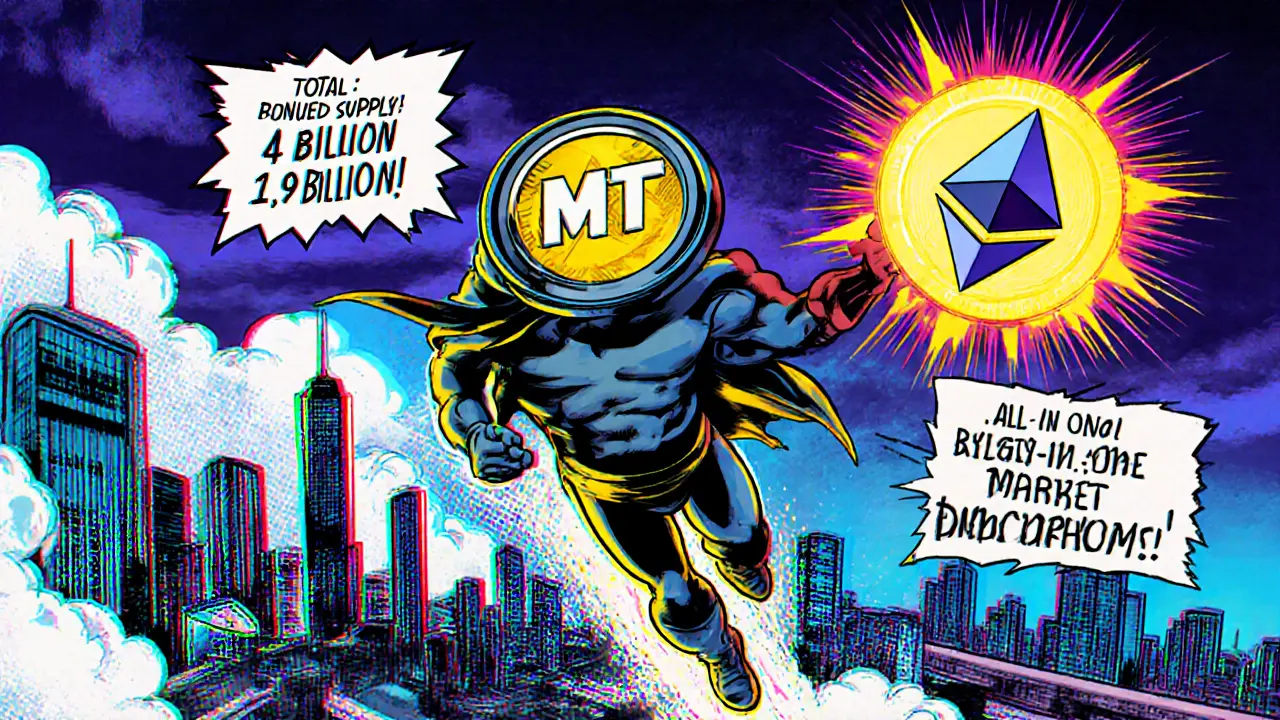Crypto Token: What It Is, How It Works, and Why It Matters
When exploring crypto token, a digital asset that lives on a blockchain and can represent value, utility, or ownership. Also known as digital token, it fuels everything from simple payments to complex smart‑contract ecosystems. A airdrop, a distribution method where free tokens are given to users to boost awareness or reward participation relies on crypto tokens to create instant network effects. Underpinning both concepts is the blockchain, a decentralized ledger that records transactions in immutable blocks, which ensures that tokens cannot be double‑spent and that ownership is transparent. When you hear about decentralized finance, a suite of financial services built on blockchain without traditional intermediaries, know that crypto tokens are the glue that powers lending, staking, and yield farming. Finally, payment cryptocurrency, tokens designed for everyday transactions like buying coffee or paying bills shows how the same technology can be practical for daily life.
Crypto tokens come in three broad families: utility tokens that grant access to a platform’s features, security tokens that represent ownership in real‑world assets, and governance tokens that let holders vote on protocol changes. Utility tokens like those used in DeFi platforms enable users to stake, borrow, or earn fees, turning idle assets into income streams. Security tokens are regulated by financial authorities, meaning they must comply with KYC and reporting rules—a detail you’ll see reflected in posts about regional regulations. Governance tokens are the voting power behind protocol upgrades; their value often spikes during airdrop events because early participants receive them for free. The crypto token landscape is also shaped by tokenomics: supply caps, inflation rates, and distribution schedules all dictate price behavior. For example, a token with a hard cap of 10 million units will react differently to market demand than one with an uncapped inflation model.
Real‑world use cases illustrate why crypto tokens matter beyond speculative trading. Payment cryptocurrencies let merchants accept borderless payments with low fees, a trend highlighted in guides on using Bitcoin or Litecoin for everyday purchases. Airdrops, on the other hand, serve as marketing tools that can quickly broaden a token’s community—a strategy covered extensively in our Velas GRAND airdrop and ZKSwap V3 airdrop articles. Blockchain’s immutable record also provides a trustworthy backbone for identity solutions, as seen in our DID vs Traditional Identity comparison. Meanwhile, DeFi platforms harness tokens to create liquidity pools, enabling users to swap assets without a central exchange—a concept explored in our DEX reviews and cross‑chain bridge discussions. Each of these angles connects back to the core idea that a crypto token is both a unit of value and a programmable tool.
Below you’ll find a curated set of articles that unpack these ideas in depth. Whether you’re curious about mining difficulty, need a step‑by‑step airdrop claim guide, or want to compare exchange fees, the collection gives you practical insights and up‑to‑date analysis. Dive in to see how crypto tokens shape today's blockchain ecosystem and what you can do with them tomorrow.

What is MyToken (MT) Crypto Coin? An In‑Depth Look
Explore MyToken (MT) crypto coin: its ERC‑20 specs, market data platform, recent inactivity, and the risks you need to know before investing.
August 11 2025